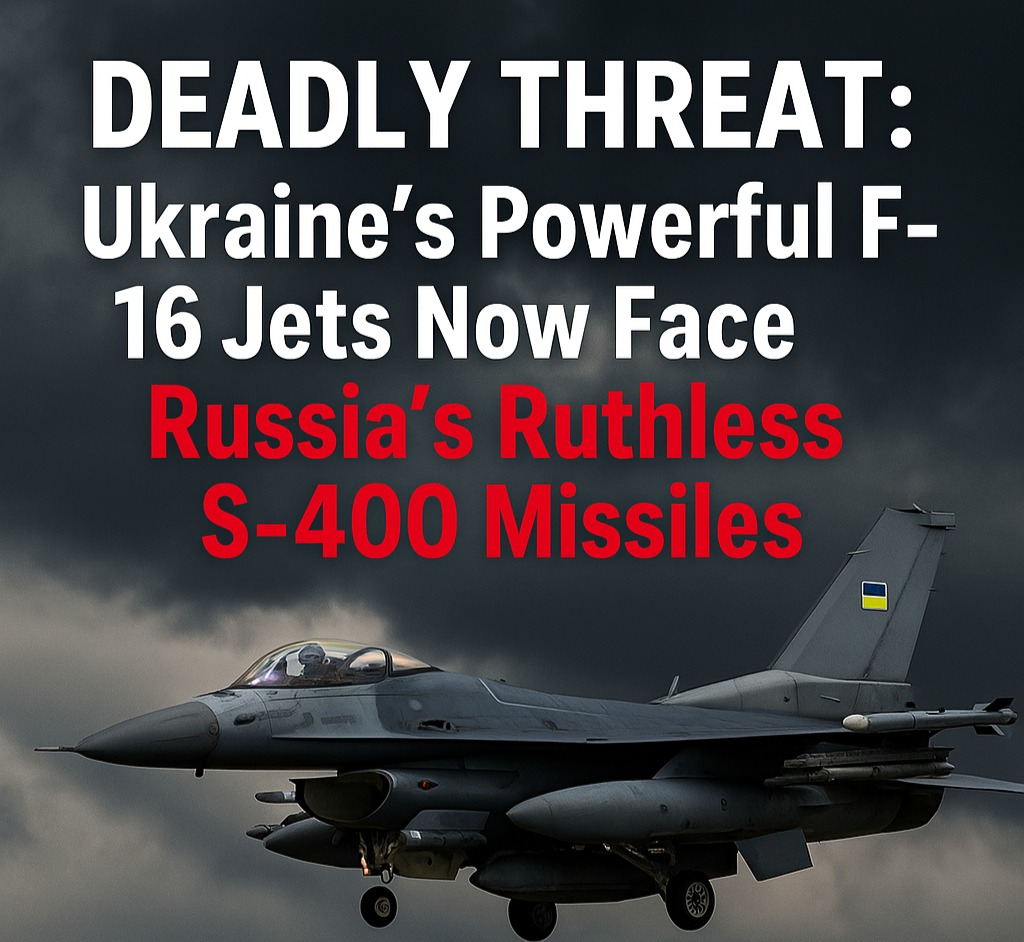Ukraine now flies advanced F-16 fighter jets almost every day. These modern jets are part of Ukraine’s plan to fight back against Russia’s ongoing attacks. The jets come from European allies like the Netherlands and Denmark. With these new aircraft, Ukraine wants to defend its airspace and weaken Russian military positions.
Daily Flights, Bigger Risks
But a new danger is rising. Russia is using its S-400 air defense system to target these powerful jets. The S-400 is one of the most dangerous missile systems in the world. It can shoot down planes from very far away. Now, Ukraine’s pilots must be more careful every time they fly an F-16.
How the S-400 Works
The S-400 is a missile defense system. It has radar that can detect planes hundreds of miles away. Once it finds a target, it launches fast-moving missiles to shoot it down. Some of these missiles can fly more than 250 miles and hit aircraft moving at high speed. For Ukrainian pilots, this increases the hazard of flying.
To stay safe, pilots often fly low or avoid certain areas. But flying low can make it harder to see the enemy and use the plane’s radar. These changes reduce the F-16’s full power and can limit how the jet is used in battle.
Ukraine’s F-16s are more advanced than its older MiG and Su planes. They have better targeting systems, smarter missiles, and strong electronic tools to confuse enemy radar. But even with all this, the S-400 is a tough enemy.
Portugal’s Powerful F-16 Jets Replace Costly Dutch F-35s in NATO Baltic Skies Realignment
How Ukraine Fights Back
To deal with the S-400, Ukraine is trying different methods. First, it uses the F-16’s ability to strike from far away. The jets can fire radar-guided missiles and GPS bombs that hit targets up to 40 miles away. This lets the pilots attack without flying too close to Russian defenses.
Second, Ukraine may use the jets in special missions to block or confuse enemy radars. This is called SEAD—Suppression of Enemy Air Defenses. In this role, the F-16 can carry jamming devices that send out signals to mess with Russian radars. If done right, this gives other planes or drones a chance to enter the area safely.
Even with all these tools, the job isn’t easy. The S-400 is capable of tracking and striking swift jets. So, every mission over or near enemy territory carries a big risk. A single mistake can lead to a loss of a valuable aircraft and its trained pilot.
Ukraine’s F-16 Jet Crashes Amid Russian Attack
Keeping the Jets Safe
Another problem is where and how to keep the F-16s safe when they’re not flying. These jets need smooth runways and special hangars for maintenance. Most Ukrainian airbases are old and not made for Western planes. Russia knows this and tries to strike airfields with missiles and drones.
To protect the jets, Ukraine spreads them out across different locations. Some bases may even be on highways or temporary strips, just like during the Cold War. But this method has limits. Each jet needs about 16 hours of repair and check-ups for every hour it flies. That takes a lot of time, equipment, and trained staff.
Many repairs happen outside of Ukraine, probably in nearby friendly countries. This setup helps avoid Russian attacks but also slows down how quickly the jets can return to service. It’s like having a car that needs to go to another city for repairs every time something breaks.
China’s Veiled Warning to US; WZ-9 Drone Could Detect F-35 and B-21
A High-Stakes Battle in the Sky
Russia is not sitting back. It is bringing more fighter jets like the Su-35 and MiG-31 to face the new threat. These planes have long-range missiles and strong radar systems. Together with the S-400, they create a very difficult sky for Ukrainian jets to operate in.
To avoid losing planes, Ukrainian pilots must use smart tactics. They rely on speed, distance, and surprise. Still, they can’t always avoid danger. One Ukrainian F-16 was already lost last year, though not due to enemy action. It illustrates the fragility of the situation.
Ukraine currently has only around 16 to 18 F-16s. That’s a small number when compared to the hundreds of Russian aircraft. Each F-16 is precious. Losing even one matters a lot.
The Bigger Picture
For Ukraine, the F-16 represents more than simply a combat aircraft. It represents modern support from European partners and a move toward working more closely with NATO systems. These jets lift the morale of the country and show that help is still coming, even if slowly.
Bold Response to a Delayed Crisis: Belgium Sends F-16 Spare Parts to Keep Ukraine Flying
Still, the F-16 isn’t a magic solution. Russia’s S-400 system, strong air force, and constant strikes on Ukrainian airfields make every flight risky. Ukraine is doing its best with what it has, using a mix of old tricks and new tools to stay in the fight.
Whether the F-16s can turn the tide is still unclear. What is certain is that they’ve already made the battle in the sky more intense—and more dangerous. The S-400 remains one of the deadliest threats Ukraine’s pilots must now face.

